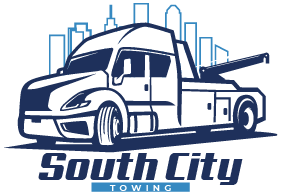What are the Different Types of Towing Services in Perth: When Should You Call Each One?
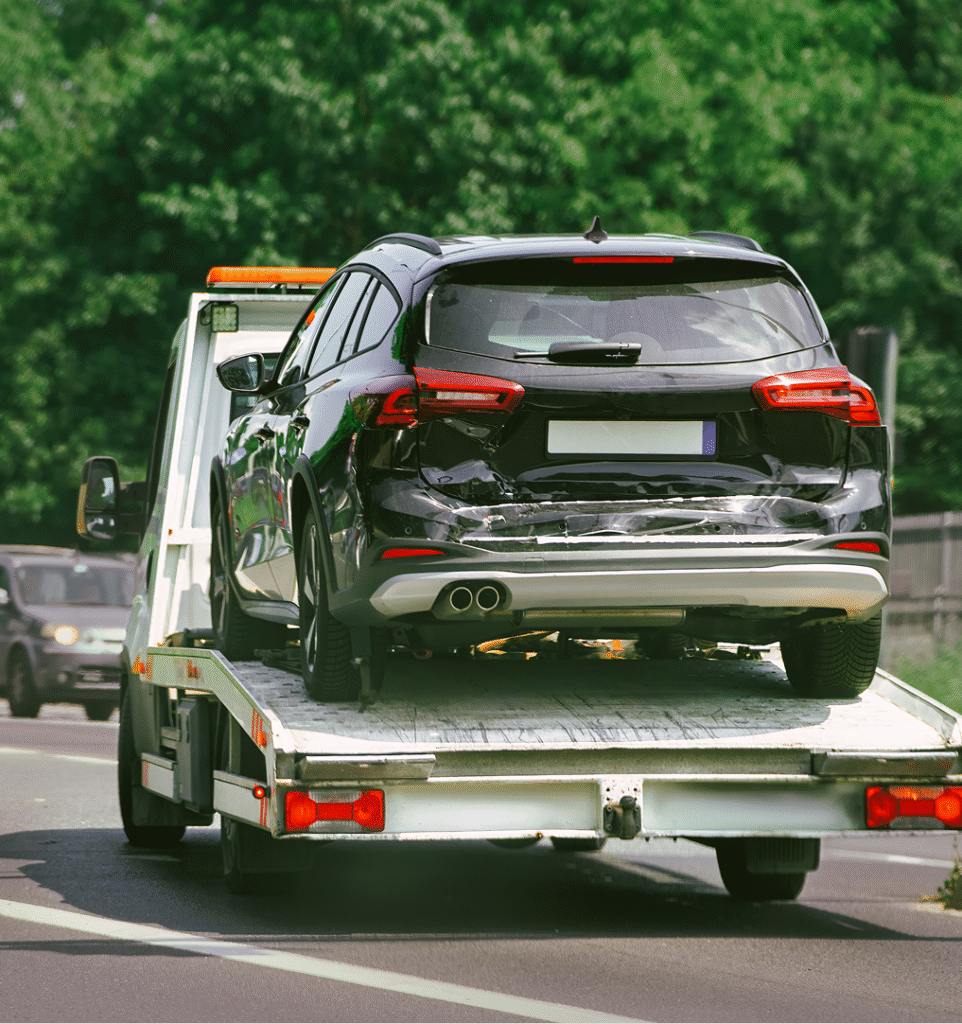
Imagine it’s 2 AM on the Kwinana Freeway near Stirling… Headlights fading… Your sedan’s battery just died… And you’re all alone, exposed, and stressed.
In moments like these, not knowing which tow truck to call can feel like a nightmare!
Here’s your helping hand. In this guide, you’ll discover every major type of towing service in Perth. We’ll explain what each service is, when to use it, and even give you ballpark cost estimates, so you’re never caught off-guard.
Let’s dig in!
10 Types of Towing Services in Perth
Not all towing services are the same. And knowing the difference can save you time, stress, and money. Below, we’ve broken down the 10 most common types of towing services in Perth into two categories:
- Towing Types by Method
- Towing Types by Situation or Emergency
Let’s explore each type, how it works, what it’s best for, and when you might need it.
Types of Towing Services by Method
Some towing needs are all about how your vehicle gets moved. These six services are defined by the equipment and technique used. Each method has its own strengths, so you’ll know exactly which tow truck to call for your specific situation.
1. Wheel Lift Towing
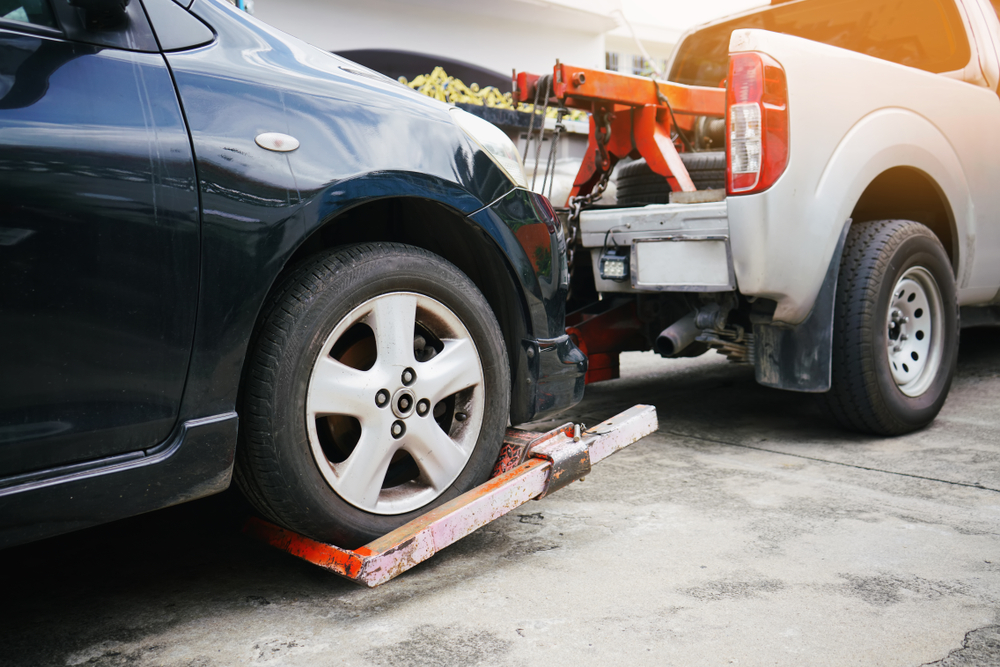
Wheel-lift towing is the classic and cheapest tow option in Perth. A hook or yoke goes under the front or rear wheels of your vehicle, lifting two wheels off the ground. Since only two wheels are lifted, it’s fast and cost-effective for short distances.
When to use wheel lift towing:
Fast, local tows like a flat battery recovery or moving a car from your driveway.
Ideal for: Sedans, SUVs, small vans, basically anything light that isn’t high-end or all-wheel-drive.
2. Flatbed (Rollback) Towing
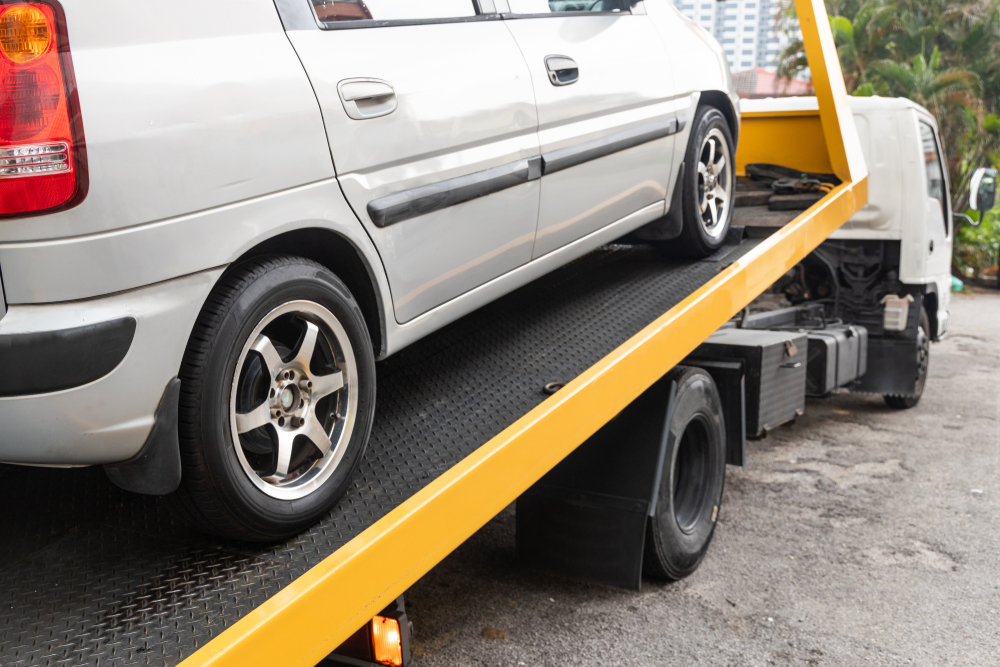
Flatbed towing is the safest, most versatile option. Your vehicle is fully loaded onto a flat, level bed on the truck and then hauled. This means zero wear on the towed wheels and safer handling.
When to use flatbed towing:
Moving special cases like luxury/low-clearance cars, all-wheel-drive vehicles, motorbikes, or any tow more than a few kilometers.
Flatbeds are also used for long-distance moves to minimise wear.
Even high-end or damaged cars can be flatbed on and off with minimal risk. But remember, flatbeds can take longer to load than a simple wheel-lift hookup.
Ideal for: Any vehicle up to 3 tons. Like passenger cars, dirt bikes (with special chocks), classics, imported cars, and 4WDs.
3. Tilt Tray Towing
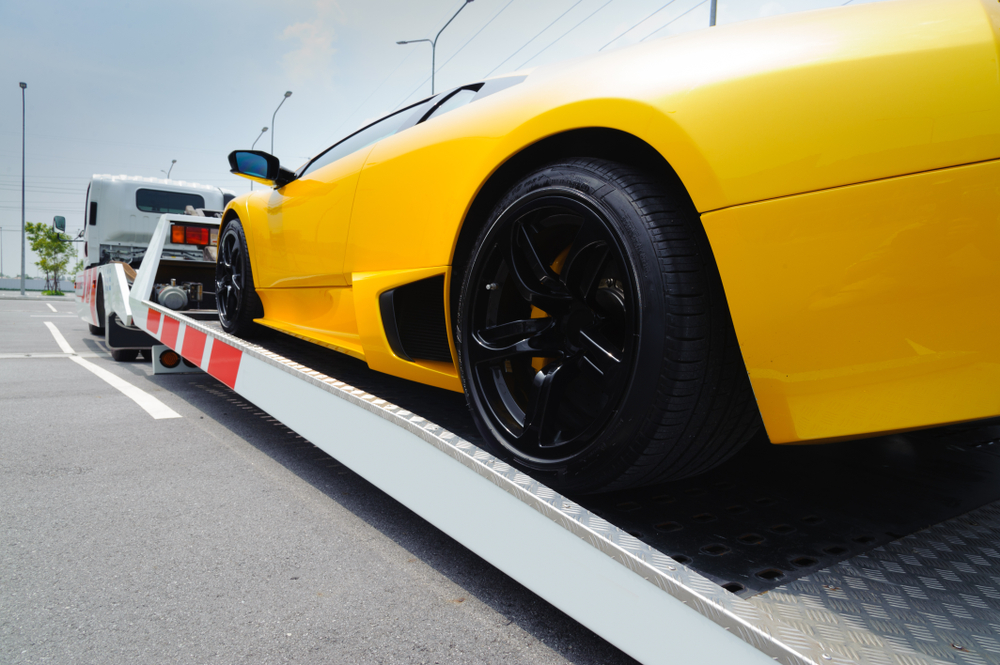
Tilt trays combine the safety of a flatbed with easier loading. Because the entire bed tilts to ground level, even a car that won’t steer or has no tyres can be pulled aboard with a winch.
When to use tilt-tray towing:
If your vehicle was in an accident or won’t roll, tilt-tray is the answer. Loading non-drivable or badly damaged vehicles: crash scenes, flooded cars, or breakdowns where the wheels or suspension are shot. Also great for motorcycles or small boats on dollies.
Ideal for: Wrecks, immobile SUVs, motorcycles, small boats on trailers; basically anything you can’t easily hook up with a wheel-lift.
4. Hook-and-Chain Towing (Legacy Method)
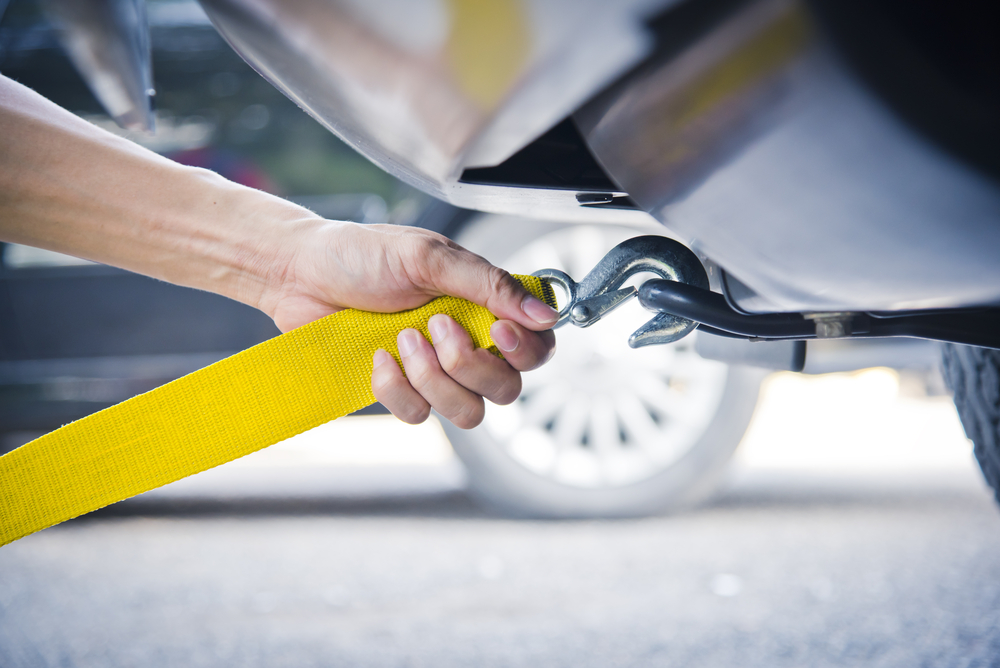
Hook-and-chain is a traditional tow truck method which is are now extremely rare in Perth. They were common decades ago for heavy trucks, but today even remote call-outs usually use a flatbed or heavy-duty rig.
In this towing, chains loop under a solid axle and lift two wheels. (No flat platform.)
When to use hook and chain towing:
It might only show up in remote or agricultural settings where flatbeds can’t reach.
Ideal for: Old body-on-frame trucks or farm machinery. NOT used for modern unibody cars as it can damage them.
5. Heavy Duty / Multi-Axle Towing
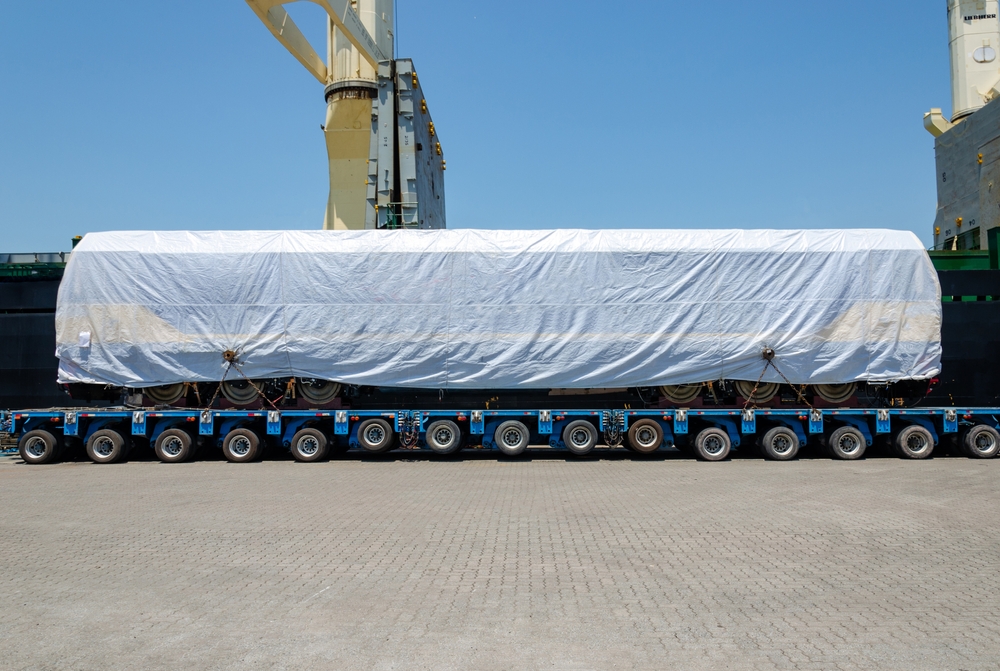
Heavy-duty towing rigs are the giants of the fleet. It involves very large tow trucks with multiple axles, massive winches and booms designed for heavy loads.
When to use heavy-duty towing:
Recovering and towing big rigs: semis, buses, earth-moving equipment, and heavy construction vehicles. They can handle rollovers or breakdowns of vehicles that a regular tow truck can’t.
Ideal for: Anything too big for a standard tow like buses, big trucks, cranes, excavators. These trucks haul loads well above 3–5 tons.
6. Motorcycle Towing Rigs
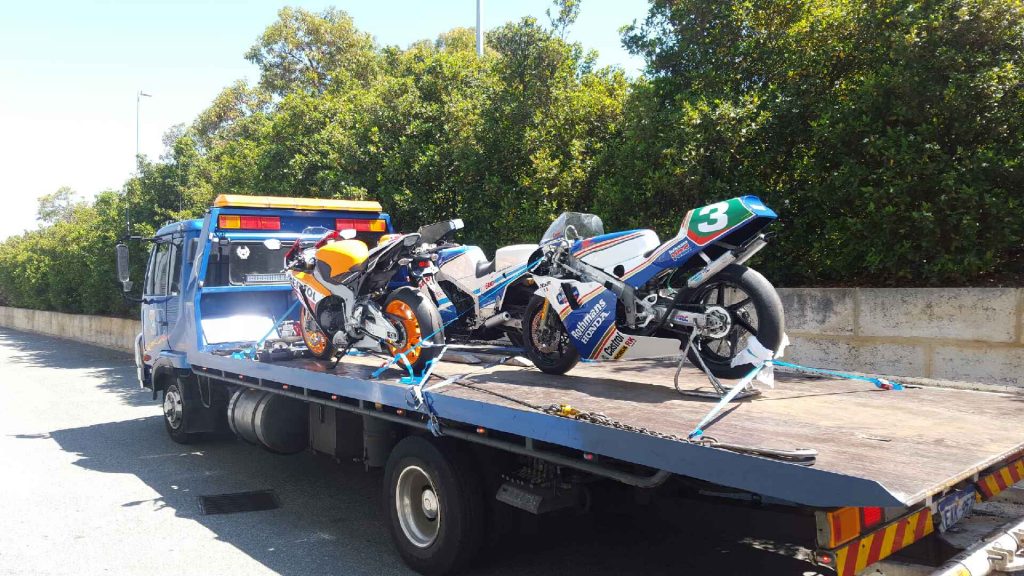
Motorcycle tow trucks are surprisingly common in Perth. If your bike won’t start or needs shipping, a skilled operator will strap it in place. It involves smaller tilt trays or flat racks equipped with wheel chocks and soft straps, specifically designed to carry motorcycles upright.
When to use motorcycle towing:
Safe transport of bikes, scooters, dirt bikes. Plus, when you need a local shop-to-shop run or breakdown recovery.
Ideal for: All kinds of two-wheelers: sports bikes, cruisers, scooters. Occasionally small ATVs.
Types of Towing Services by Situation or Emergency
Some tows are defined by when or why you need them, rather than a truck type. The next four services are context-driven:
7. Breakdown Towing Service
This is the everyday service most people think of for breakdowns. It’s usually a quick call. The company tries to get you going immediately. The tow operator tries simple fixes on-site like jumpstarting the battery, changing a tyre, adding fuel.
- If it can be fixed quickly, no tow is needed.
- If the repair isn’t possible roadside, the car is loaded usually by wheel-lift and hauled to your garage or cheaply to a nearby workshop.
When to use breakdown towing:
When a vehicle has a mechanical or electrical failure on the road like dead battery, flat tyre, ran out of fuel, etc.
Equipment Used: A wheel-lift truck with jump pack, a toolbox.
8. Emergency Towing Service
Emergency towing is all about speed and safety. Perth’s top towing companies including South City Towing advertise within 15-minute responses for accident calls.
Upon your call, a tow truck (flatbed or tilt) is dispatched urgently with police liaison if needed. They secure the scene, use lights/sirens if on a highway, and remove vehicles quickly to avoid hazards. They handle paperwork; police reports, notifications, on-site or at the yard.
When to use emergency towing:
Crashes or very high-risk breakdowns requiring immediate clearance. Available 24/7.
Equipment Used: Flatbed or tilt trucks are preferred for safety. The team may also handle traffic direction.
9. Accident Towing Service
After a collision, the process is a bit more formal. The tow operator must follow regulations.
The tow crew arrives post-accident, clears the wreckage. They will complete accident paperwork with police and sometimes coordinate with your insurer. Vehicles may be taken to an approved wrecking yard if totaled, or to a repair shop if salvageable.
When to use accident towing:
A subset of emergency towing specifically ordered by police after collisions, especially on highways or public roads.
Equipment Used:
- Tilt trays are common for badly mangled cars.
- Flatbeds for straightened salvage cars.
- Heavy-duty trucks may be needed for pile-ups.
10. Boat & Recreational Vehicle Towing
Perth is surrounded by water and campsites, so many towing services specialise in boat/RV moves. For example, towing your cabin cruiser to the Murray River might involve a boom crane or rollers.
Always use a company experienced in marine gear to avoid damaging your boat or van.
The tow service uses specialised trailers or drop deck trucks. For boats, they can roll the vessel on/off or use a cradle. Caravans/RVs hook up just like trailers, but crews ensure braking systems and sway controls are set. The operator has experience with launching or backup at boat ramps.
When to use boat towing:
Transporting boats, jet skis, caravans/RVs, or trailers to launch sites, campgrounds, service centers, etc. This can be local or long-distance.
Equipment Used: Boat dollies, lift ramps, or heavy trailers. Large tow trucks with high capacity or tractor units for big RVs.
How to Choose the Right Towing Service
Step #1: Identify your vehicle and situation.
Is it just a standard sedan or something unusual (heavy truck, boat, motorcycle)? If it’s a specialty vehicle, go with a tow company that advertises heavy-duty towing.
Step #2: Assess damage and drivable status.
If your car won’t roll or is badly damaged (Dents, crashed, no wheels), you need a flatbed or tilt. If it’s minor (flat tire, dead battery) and close by, a wheel-lift is faster/cheaper.
Step #3: Consider distance and urgency.
For long hauls, flatbeds protect your car better. For immediate roadside work at night, call an emergency/accident tow. Also weigh your budget: a luxury towing service costs more, but skimping on the wrong service could damage your vehicle.
Pro Tips: Always check licensing and insurance.
In WA, tow trucks must be licensed and insured. Don’t hesitate to ask the operator for their license number and for a written quote. Make sure the tow company is based in Perth and trackable as many like us use GPS dispatch.
Towing Service Cost Estimate
In Perth, towing costs have some common ranges so you know what to expect. For example:
- A 5 km standard car tow might be around $100 (base rate) + any call-out fee.
- A local tow within 10 km is about $80–$150.
- Perth’s new regulations cap crash tow fees: up to $485 for the first 50 km.
- Beyond 50 km, you’d add $4.40/km on top of the $485.
- After-hours or urgent calls add roughly $120–$200.
In short, expect about $100–$200 for most tows in Perth. Long-distance or highway pulls (50–100 km) can jump into the high $100s or several hundred dollars. Heavy vehicles or specialty tows (bikes, boats) can increase cost by 20–25%. (Source: Transport WA)
Stuck on the side of the road? Need help fast?
Reach Out South City Towing & Get Your Vehicle Towed Fast & Safe!
South City Towing offers prompt, reliable 24/7 towing across Perth and WA.
We’re 24/7 licensed, experienced, and local operators. We know Perth roads inside-out and have the right truck for any job. Whether it’s lift-truck or flatbed, breakdown or accident, our professionals handle it.
Don’t let a breakdown ruin your day.
Contact us and our nearest towing service truck will be on its way. We’ll get you back on the road safely and affordably.
Call 0492 013 846 for IMMEDIATE dispatch
FAQs
What is the best towing method?
The safest way to tow a car is on a trailer (all wheels on), either on a flatbed truck or a towed trailer. This keeps the towed vehicle completely off the road and avoids strain on its transmission.
Can you tow a boat on a flatbed?
Yes. Boats can be towed on flatbed/tilt-tray trucks if they’re properly loaded and secured (via a boat trailer on the flat deck). But many choose specialised tilt trays or actual boat trailers for easier launch and recovery.
What’s the fastest tow truck response time in Perth?
Top towing services in Perth advertise extremely fast response for emergencies. For example, we aim to reach accident scenes within 15 minutes of the call. And a breakdown call might see a tow truck arrive in 30–45 minutes. But truly urgent (crash) cases can be quicker if traffic allows.
What is the 80% rule when towing?
It’s generally recommended not to exceed 80% of your vehicle’s towing capacity. This rule of thumb provides a safety margin, accounting for any load weight miscalculations or extra stress. For example, if your truck’s max towing is 3,000 kg, keep towed weight at 2,400 kg or less.
What’s the cheapest way to tow a car?
A forklift wrecker attachment (like an after-market forklift tow bar) can be the cheapest solution. It lets a forklift lift and carry a car a few meters. However, for public roads or any distance, you need a legal tow truck.
What are the towing laws in Australia?
Both the tow vehicle and trailer must be registered and roadworthy. Registered trailers require their own number plate. Tow bars and couplings must not cover or obscure the towing vehicle’s number plate or lights. Any tow setup must meet the Australian Design Rules and local road laws.
Can you tow a car without a towbar?
In Australia, using a rigid towbar is preferred. Rope/chain towing is only a last resort on safe roads, as loose tow can be dangerous. You can use a tow rope or chain in an emergency, but it’s tightly regulated. For safety, the distance between the two vehicles must not exceed 4.5 meters. The rope or chain must be clearly visible.
How much does towing cost in Australia?
Typically, towing costs range from $100 to $450 in Australia. This varies with service type, distance, and time. For local city tows, the first 10 km might cost $100–$150, then $3–$10 per additional km. After-hours and weekends usually add 20–30% more. Long-distance or specialty tows push the price toward the higher end.
